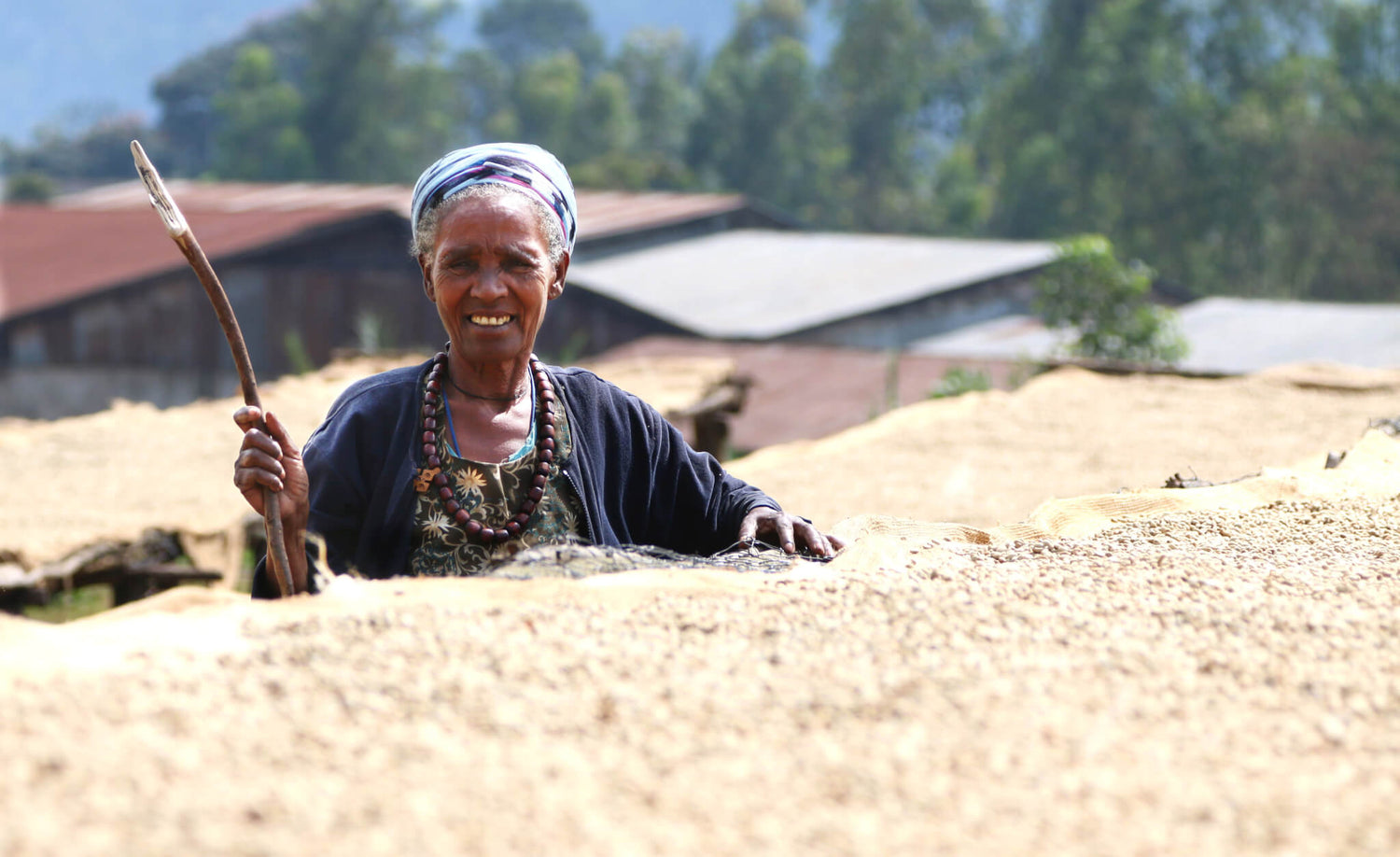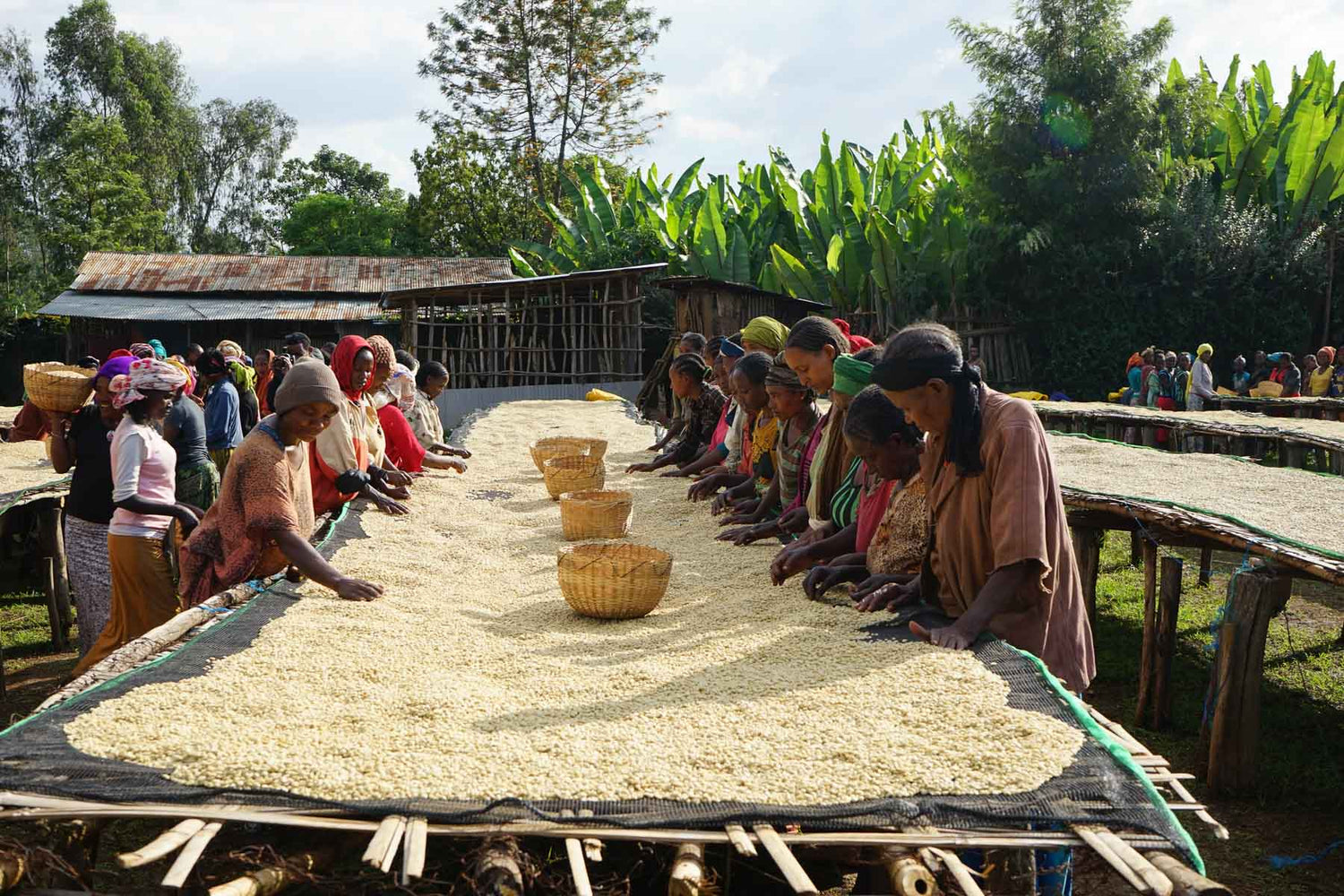
Ethiopia
While Ethiopia is famous as coffee’s birthplace, today it remains a specialty coffee industry darling for its incredible variety of flavors. While full traceability has been difficult in recent history, new regulations have made direct purchasing possible.
key facts

Harvest months
Low elevations: October – December | High Elevations: November – January

Production volume
6,740,000 (in 60kg bags)
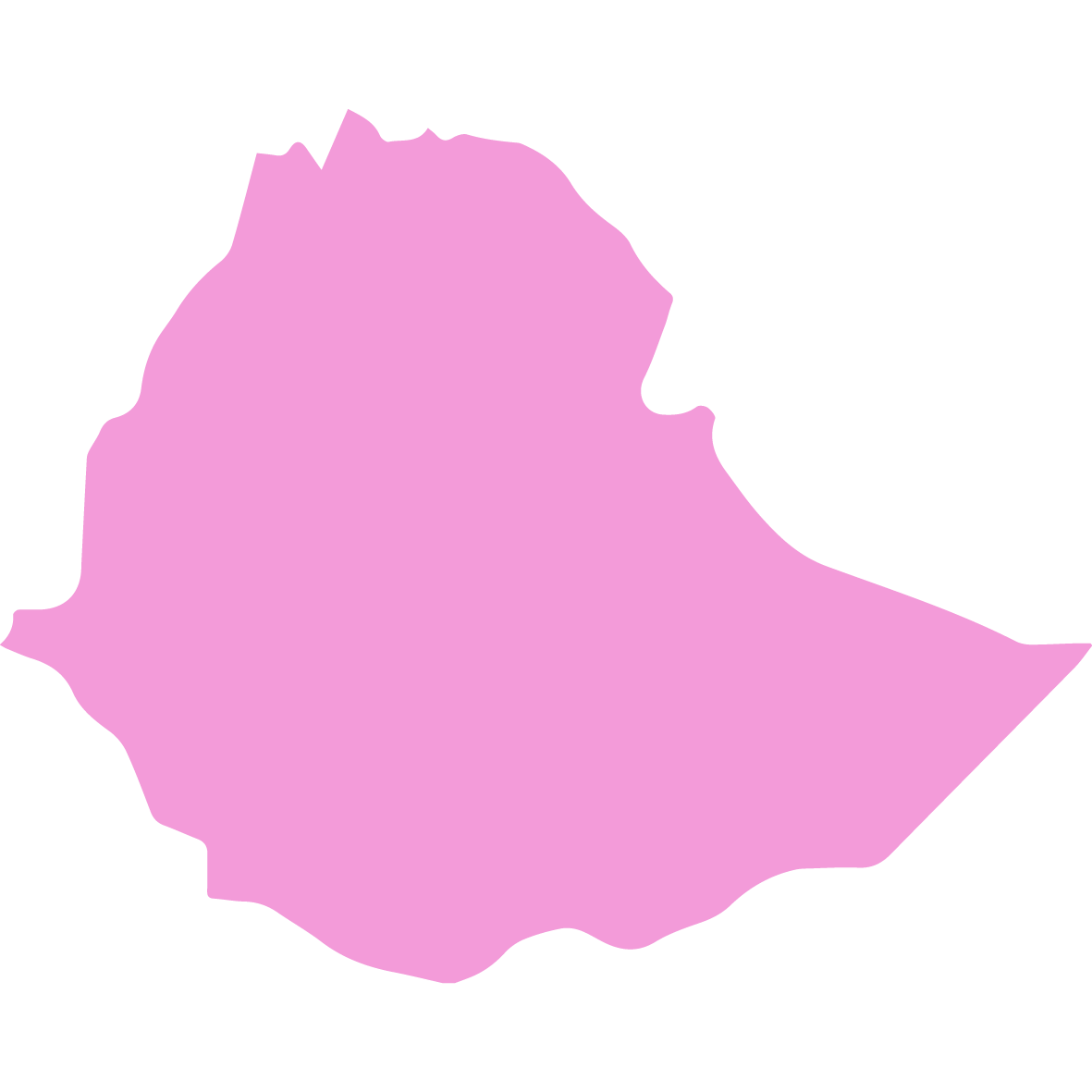
Main regions
Djimma | Limu | Nekempt | Guji | Yirgacheffe (Yirga Chefe) | Gedeb | Sidamo | Kochere

Common varietals
Local landraces and JARC varieties
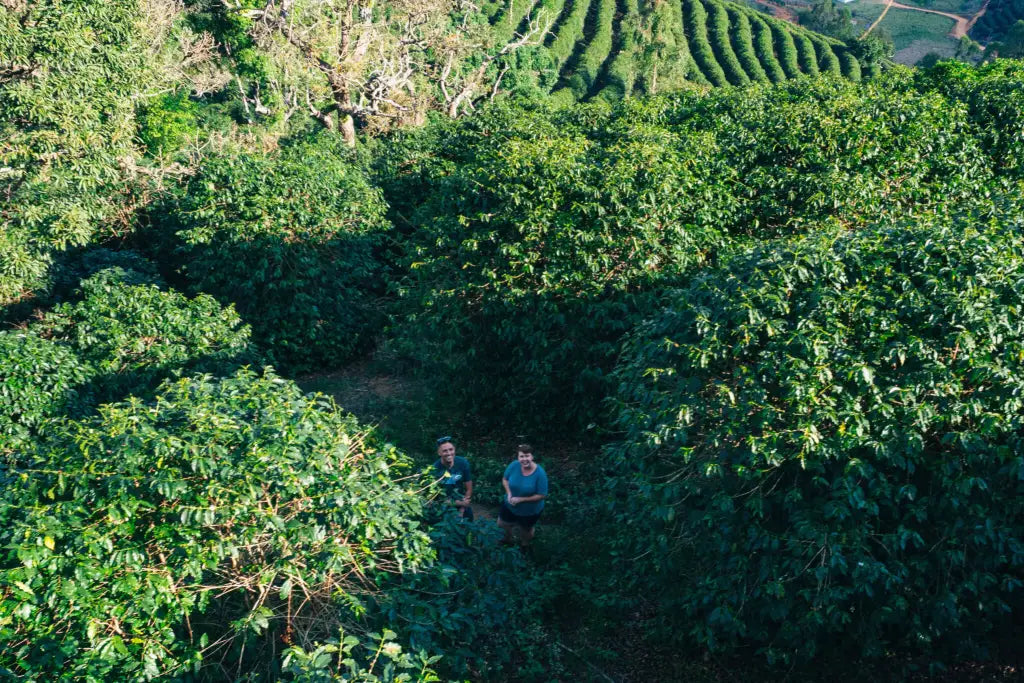
History of coffee in Ethiopia
Ethiopia’s long coffee history predates written records. Arabica plants are native to Ethiopia, and many of the Arabica varieties now cultivated worldwide have their genetic roots in wild coffee growing in Ethiopian forests. With such easy access to wild-growing coffee, it is undoubtable that early people in Ethiopia consumed coffee for centuries before it became the global beverage that it is today.
The long tradition of coffee in Ethiopia has continued into the modern day. Coffee drinking is widespread in both social and cultural contexts and has a place at a wide range of social events. Nearly half of all coffee produced in the country is consumed on the domestic market. That’s no small feat for a country that produces some 860 million pounds of green coffee beans annually.
Coffee also provides the main income for up to 25% of the population. More than 15 million people grow coffee as their major cash crop. The Ethiopian government also depends on coffee to generate between 25 and 35% of total annual export earnings.
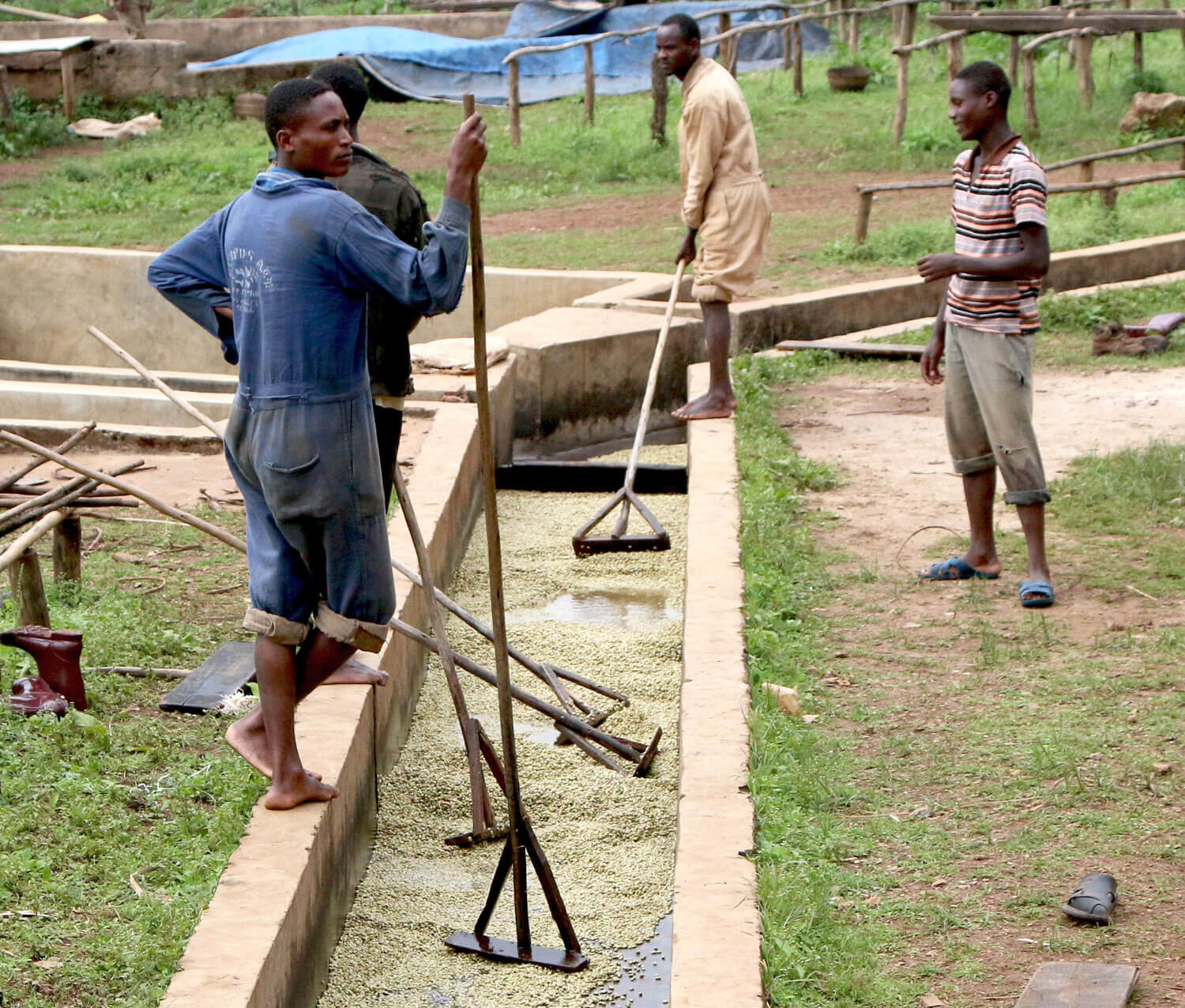
What makes Ethiopian coffee so good?
Exporters and importers frequently use the term “heirloom” to describe Ethiopian coffee varieties. However, this catchall-term often hides that impressive array of varieties that are unique to certain regions.
Varieties in Ethiopia can be classified into two main groups: Jimma Agricultural Research Centre (JARC) varieties or regional and local landraces.
The JARC is responsible for developing many of the varieties that flourish across Ethiopia today. JARC was established in 1967 and has been developing and sharing new coffee varieties ever since. The center also provides agricultural extension training to help farmers learn the correct cultivation methods for these newer varieties.
Landraces are plant varieties that have evolved over generations of selective breeding to be best suited to their local conditions. There are at least 130 widely cultivated regional or local landraces.
In Ethiopia, the genetic diversity of landrace coffee trees means that we find a diversity of flavor, even between (or within) farms with similar growing conditions and processing.
Processing Infrastructure Protects Quality
In addition to varieties, processing methods also contribute to end quality. Most coffee produced in Ethiopia is grown by smallholders, but they often do not have their own processing infrastructure. Instead, most smallholders deliver cherry to a wet mill. Wet mills are owned by either cooperatives or private companies.
Wet mills purchase cherry from the farmers and oversee processing. Most washing stations will specialize in both Fully washed and Natural processing methods. While the efforts of each farmer—from selecting and nurturing trees to picking on ripe cherry—are essential determinants of coffee quality, the wet mill’s practices are crucial. Wet mill staff and management are of the utmost importance, and the best washing stations employ stringent quality control measures. They only accept red, ripe cherry and have exacting drying practices. Nearly all washing stations sort drying coffee several times.
While smallholder farmer do not usually have their own pulpers, some do process coffee at their own homes using the Natural method. In these cases, coffee will be selectively picked and laid to dry on small raised beds. This coffee will usually be sold to a wet mill or collection center at the end of the season.
Preserving Coffee Producing Traditions
The final key ingredients for excellent coffee in Ethiopia are the producing traditions that have created the genetic diversity, processing infrastructure and great coffee we enjoy today.
Most producers in Ethiopia are smallholders, and the majority continue to cultivate coffee using traditional methods. As a result, most coffee is grown with no chemical fertilizer or pesticide use. Coffee is almost entirely cultivated, harvested and dried using manual systems.
Coffee from Ethiopia
-
Santa Lucia
Tastes of Milk chocolate, hazelnut, almond.Regular price From £6.00Regular priceUnit price per
The ECX
As mentioned previously, the majority of coffee growers in Ethiopia are smallholders. Despite their considerable numbers, many of Ethiopia’s smallholders have historically experienced market disadvantages. Inequality in the coffee sector has often been a consequence of wider political imbalances that have affected regulations on the coffee industry.
The Ethiopian Commodity Exchange (ECX) was established in 2008 as a way to solve many of the problems farmers were facing at the time. The founders hoped that the ECX would help farmers receive higher prices, get paid more quickly and receive better payment for better quality, regardless of how recognizable the name of their region or cooperative was.
To accomplish the goals, the ECX was intentionally designed to semi-anonymize coffees. Teams of experts cupped and graded coffee based solely on cup quality and region and, those that purchased coffee, did so on the merit of the cup, not the reputation of the name.
Regulations Seek to Remove Limitations of the ECX
While the ECX did help many farmers get higher prices, its original structure had some drawbacks.
While some cooperatives – particularly those with certifications – were allowed to sell their coffee directly, the majority of Ethiopia’s 5 million+ smallholder farmers were required to sell their coffee to the ECX.
The ECX focus on anonymizing coffees made it nigh on impossible to obtain accurate traceability information. For people seeking more traceability, there was the ‘second window’, which allowed buyers to purchase coffee directly from cooperative unions. There were also a select number of larger farms that were able to obtain their own export licenses. Very few producers fell into these categories, however. As of 2017, about 88% of exported coffee was still purchased through the ECX.
New Laws Spur New Processing Infrastructure
In 2017, the Ethiopian Coffee & Tea Development and Marketing Authority introduced a bill that allowed Ethiopian coffee, including coffee sold through the ECX, to be marketed and sold with full traceability. The bill also gave farmers a chance to apply for export licenses that enabled them to process, market and export their coffee directly. These changes have led more farmers to construct their own processing infrastructure.
Under this new system, producer groups choose an exporter and miller to be service providers that will deal with logistics, dry milling and exporting. This system places an emphasis on preserving traceability for each producers’ lots throughout the supply chain. It also means that farmers have more choice and more control over the price they receive. Finally, it provides incentives for farmers who are geared towards quality, benefitting all actors in the supply chain.




